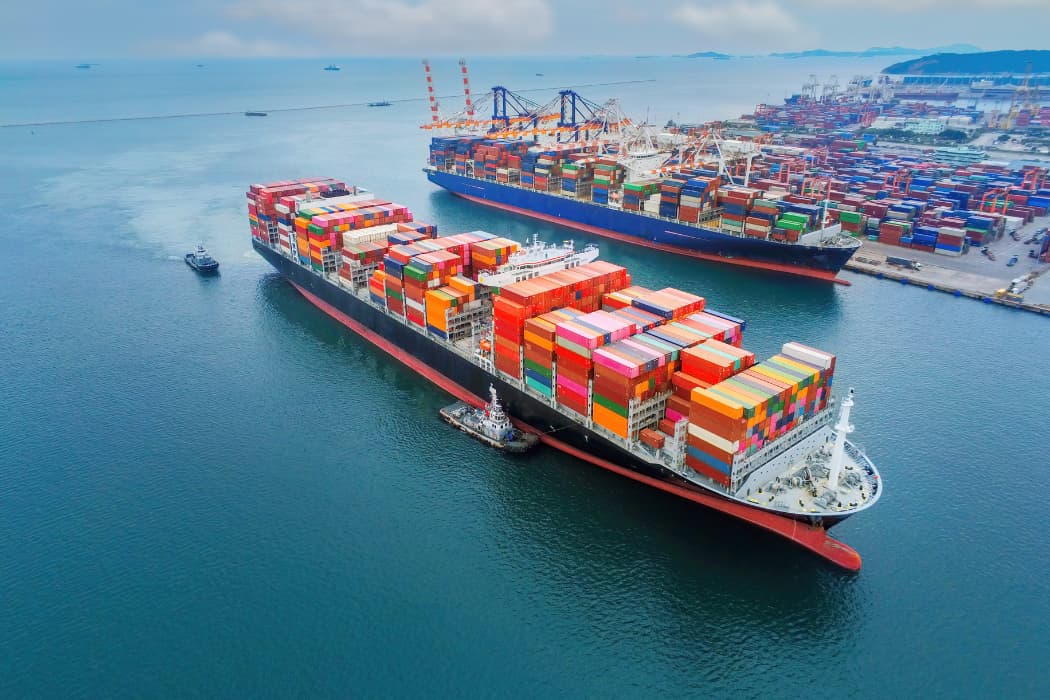
When disruption in the Red Sea co-occurred with ongoing water level challenges in the Panama Canal, shippers were eager to understand immediate supply chain impacts. That uncertainty led many to build contingency plans to address short-term implications. However, due to lower overall demand, those short-term issues have not been as disruptive as many anticipated. Despite this, global and domestic shippers cannot ignore the longer-term cascading impacts that may follow in the coming months.
Here is what shippers need to know now about rates, capacity and the ports as they plan for Q2 through Q4 this year:
Capacity changes may impact ocean rates
Since December, 80% of the Suez Canal’s capacity and $200 billion of goods have been diverted to the Cape of Good Hope. These diversions can increase overall transit times by 30%.
And on the Panama Canal, daily vessel traffic has decreased 30% due to historically low water. Avoiding the Panama Canal adds 7 days via Suez Canal and 5-15 days via Cape of Good Hope for all Asia to East Coast or Gulf U.S. shipments.
Additional ocean vessel capacity that began entering the market in 2023, will continue throughout 2024. However, the additional capacity that entered the market in 2023, has been fairly absorbed by the re-routing of vessels via the Cape of Good Hope with the 3,500 additional nautical miles vessels need to travel.
As global ocean carriers continue to build on their understanding of their costs, expected shipper demand, and impact to other trade lanes from the re-routing and shifting of vessels, ocean rates could decrease as we move throughout 2024. Geopolitical conflicts, demand, and other supply chain disruptors will be a big factor in rates and how long carriers choose to reroute vessels.
Potential delays in and out of ports and rail terminals
Extended transit times have affected arrival schedules, potentially resulting in vessel congestion, equipment constraints, and driver capacity challenges. Due to reduced demand, ports are witnessing an upswing in empty containers at port and rail terminals, leading to a U.S.-Asia equipment imbalance.
The looming threat of port congestion and equipment disparities may revive concerns about container dwell time, detention, and chassis accruals in the second quarter and beyond. Shippers should closely monitor trends in daily demurrage and detention fees to inform their contingency plans.
In Los Angeles, certain terminals are already restricting daily dray appointments and empty returns, resulting in higher charges for chassis and storage. As empty container volumes increase at the ports, it’s likely more restrictions will be enforced. These risks vary per market and will remain fluid into Q2, so understanding them is critical for U.S. shippers to mitigate inland accessorial fees. Additionally, shippers must recognize the significance of shipping and receiving agility as a factor within their control.
Recent removals of IPI (Inland Point Intermodal) service offerings may lead to increased demand for alternative services like transloading and long-haul drayage. We actively monitor equipment trends across inland U.S. markets, proactively flagging imbalances for our customers’ awareness.
Shippers should remember that East Coast union contracts expire Sept. 30. This may impact rerouting between the coasts in the second half of the year. However, there is limited risk of disruption because Montreal labor negotiation ratified on February 18th, which will likely lead towards a positive resolution between parties soon.
Selecting the right port will streamline U.S. surface transportation
The U.S. surface transportation market is expected to tighten in the second half of this year due to capacity exits.
California will be extremely tight when produce season begins in late spring. Typically, the season sees load-to-truck ratios increase from 1.6 loads per truck in February to over 6 loads per truck at the end of June. Shippers should keep this in mind when considering a switch from East to West Coast ports in the second or third quarter.
Overall, shippers should consider the total cost and transit of any shipment in making planning decisions. Switching from the East to West Coast in the third quarter of this year may improve ocean transit times, but it could also increase inland transit times and costs due to truckload capacity and lasting port congestion from Red Sea and Suez Canal disruptions.
In addition, intermodal market dynamics tend to follow those of truckload. By incorporating an intermodal strategy into their supply chain, shippers can secure capacity that will help them maintain predictability when the market enters its next cycle.
Prioritize disruption planning in 2024
There is no one-size-fits-all solution for supply chain disruption. Even when one conflict ends, a ripple of cascading impacts could last years. While shippers shouldn’t expect the same level of ongoing disruption this year that they experienced during the pandemic, they should still consider how these complex events can affect their supply chain and adjust their 2024 strategy accordingly.
Contingency planning should include plan A, B, and C to help shippers pivot quickly to keep goods moving. The last few years have taught us that supply chains are fragile and global events can cause cascading disruption at the domestic and regional level. By working with a logistics expert, shippers can stay on top of trends and develop strategies to enhance flexibility and mitigate these disruption risks.
To learn more about the direct or indirect impacts to your supply chain, please connect with your C.H. Robinson representative. You can also sign up to receive timely updates via our Client Advisories.



